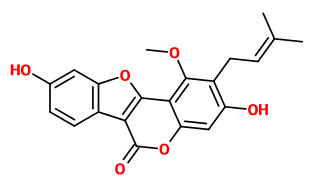Glycyrrhiza uralensis Fisch. ex DC. - syn.Glycyrrhiza grandiflora Tausch; Glycyrrhiza viscida Turz. et Bess. - Fabaceae
甘草 gan cao, gan tsao, Chinese Licorice, Chinesisches Süßholz
Perennial herb, 30-120cm tall, native from North China to southern Sibiria; stem white or brown tomentose; leaves alternate, odd-pinnate; leaflets ovate, narrowly ovate, or orbicular; inflorescence with short peduncle; corolla purple, white, or yellow. http://www.efloras.org/florataxon.aspx?flora_id=2&taxon_id=200012145
„Liquorice root, or 'radix glycyrrhizae', is one of the 50 fundamental herbs used in traditional Chinese medicine, where it has the name gancao (kan-tsao; Chinese: 甘草). It is usually collected in spring and autumn, when it is removed from the rootlet and dried in the sun. Liquorice root is most commonly produced in the Shanxi, Gansu and Xinjiang regions of China.“ http://en.wikipedia.org/wiki/Glycyrrhiza_uralensis
„Licorice is the most used crude drug in Kampo medicines (traditional Chinese medicines modified in Japan). The extract of the medicinal plant is also used as the basis of anti-ulcer medicines for treatment of peptic ulcer. Among the chemical constituents of the plant, glabridin and glabrene (components of Glycyrrhiza glabra), licochalcone A (G. inflata), licoricidin and licoisoflavone B (G. uralensis) exhibited inhibitory activity against the growth of Helicobacter pyloriin vitro. These flavonoids also showed anti-H. pylori activity against a clarithromycin (CLAR) and amoxicillin (AMOX)-resistant strain. We also investigated the methanol extract of G. uralensis. From the extract, three new isoflavonoids (3-arylcoumarin, pterocarpan, and isoflavan) with a pyran ring, gancaonols A–C, were isolated together with 15 known flavonoids. Among these compounds, vestitol, licoricone, 1-methoxyphaseollidin and gancaonol C exhibited anti-H. pylori activity against the CLAR and AMOX-resistant strain as well as four CLAR (AMOX)-sensitive strains.“
[Anti-Helicobacter pylori flavonoids from licorice extract., Fukai, T., Marumo, A., Kaitou, K., Kanda, T., Terada, S., Nomura, T., Life sciences, 71(12), 2002, 1449-1463]
„About the six main constituents of licorice of glycyrrhizin, liquiritin, liquiritin apioside, isoliquiritin, soliquiritin apioside, and liquiritigenin, the constituent property of G.glabra resembles to that of G.inflata, but that of G.uralensis does not resemble to that of G.glabra or G.inflata and is characterized by a wider content variation of the six main constituents of licorice than that of G.glabra or G.inflata. The mean contents of liquiritin, isoliquiritin, and liquilitigenin in G.uralensis are significantly higher than those of G.glabra and G.inflata. Especially, the mean content of liquiritin in G.uralensis is higher more than 1% compared to that of G.glabra or G.inflata. Additionally, glycycoumarin, glabridin, or licochalcone A are reconfirmed as the species-specific constituents for G.uralensis, G.glabra, or G.inflata respectively.“
[Constituent properties of licorices derived from Glycyrrhiza uralensis, G. glabra, or G. inflata identified by genetic information. Kondo, K., Shiba, M., Nakamura, R., Morota, T., & Shoyama, Y. , Biological and Pharmaceutical Bulletin, Vol.30(7), 2007, 1271-1277]
Glycyrol is an important anti-inflammatory constituent of Glycyrrhizae Radix, and its anti-inflammatory effect is attributed to the inhibition I-κBα phosphorylation.
[Anti-inflammatory effects of glycyrol isolated from Glycyrrhiza uralensis in LPS-stimulated RAW264.7 macrophages, Eun Myoung Shin et al., International Immunopharmacology, Vol.8(11), 2008, 1524–1532]
Isoliquiritigenin (IC50 = 9.0 μM) and glycyrol (IC50 = 3.1 μM) from G.uralensis have strong neuraminidase inhibitor activity.
[Inhibition of neuraminidase activity by polyphenol compounds isolated from the roots of Glycyrrhiza uralensis. Ryu, Y.B., Kim, J.H., Park, S.J., Chang, J.S., Rho, M.C., Bae, K.H., Lee, W.S., Bioorganic & medicinal chemistry letters, Vol.20(3), 2010, 971-974]
[Influenza neuraminidase: A druggable target for natural products., Grienke, U., Schmidtke, M., von Grafenstein, S., Kirchmair, J., Liedl, K.R., Rollinger, J.M., Natural product reports, 29(1), 2012, 11-36] http://pubs.rsc.org/en/content/articlehtml/2012/np/c1np00053e
The total amounts of 14 main compounds (liquiritin apioside, liquiritin, isoliquiritin apioside, licorice glycoside D2, 4'-dihydroxyflavone, liquiritigenin, echinatin, isoliquiritigenin, formonoetin, glycyrrhizic
acid, licoflavone A, licoflavone C, 4'-hydroxy-2„,2“-dimethylpyrano [5„, 6“: 6,7]flavone, and licochalcone) from licorice root samples of Chinese origin varied from 19.1 to 66.0 mg/g , with glycyrrhizic acid 7.0-25.9 mg/g.
[Simultaneous determination and assignment of 13 major flavonoids and glycyrrhizic acid in licorices by HPLC-DAD and Orbirap mass spectrometry analyses., Shan-Shan, W., Min, Y., Xin, C., Qiu-Rong, W., Ya-Jun, C., Chinese journal of natural medicines, 13(3), 2015, 232-240]
http://www.wasstop.com/uploadfile/2015/0417/20150417015844253.pdf
picture: Flora of China http://www.efloras.org/object_page.aspx?object_id=116740&flora_id=2

